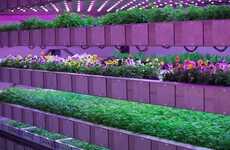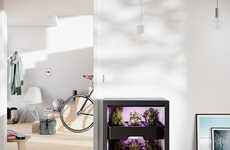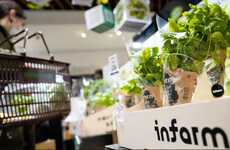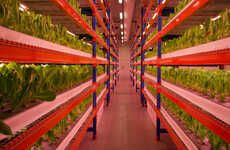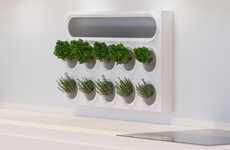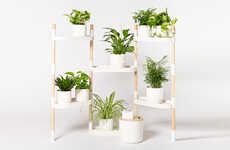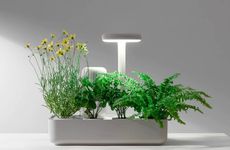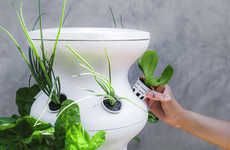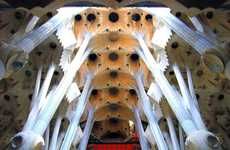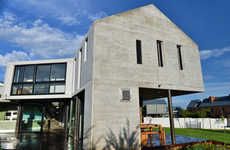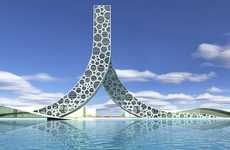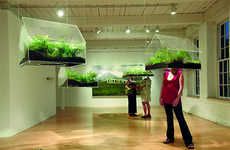
The Prague Vertical Farm is a Sustainable City Skyscraper
Amelia Roblin — April 15, 2011 — Eco
A great divide has formed between the urban environment and the agricultural landscape, but with the infrastructure suggested by this Prague Vertical Farm, fresh crops can now be truly locally grown.
Keeping with the metropolitan practice of building up, architects Michal Votruba and Michaela Dejdarova have planned for a relatively little lot on which a sustainable superstructure could be built. The concept essentially involves the stacking of modular tetrahedrons that offer added surface area to green terraces and encourage the penetration of sunlight and air. Natural resources will of course be harnessed to capitalize on rainwater collection and solar energy. The overall costs of maintaining such a system would be lower than if more land was involved, and the Prague Vertical Farm eliminates the need for long-distance transportation to where fruits and vegetables can be sold.
Keeping with the metropolitan practice of building up, architects Michal Votruba and Michaela Dejdarova have planned for a relatively little lot on which a sustainable superstructure could be built. The concept essentially involves the stacking of modular tetrahedrons that offer added surface area to green terraces and encourage the penetration of sunlight and air. Natural resources will of course be harnessed to capitalize on rainwater collection and solar energy. The overall costs of maintaining such a system would be lower than if more land was involved, and the Prague Vertical Farm eliminates the need for long-distance transportation to where fruits and vegetables can be sold.
Trend Themes
1. Vertical Farming - The trend of incorporating agriculture into urban infrastructure to reduce transportation costs and increase sustainability presents an opportunity for disruptive innovation in the field of sustainable architecture.
2. Modular Architecture - The trend of using modular designs to create vertical farms presents an opportunity for disruptive innovation in the field of construction and building technologies.
3. Sustainable Urban Planning - The trend of integrating agriculture and green infrastructure into city planning presents an opportunity for disruptive innovation in the field of urban planning and design.
Industry Implications
1. Architecture - Architecture can benefit from this trend by developing sustainable and innovative designs for vertical farms and green infrastructure.
2. Construction - Construction can benefit from this trend by developing modular and efficient building technologies for vertical and sustainable structures.
3. Urban Planning - Urban planning can benefit from this trend by integrating sustainable and agriculture-friendly infrastructure into city planning to support local food systems and reduce transportation costs.
4.7
Score
Popularity
Activity
Freshness


